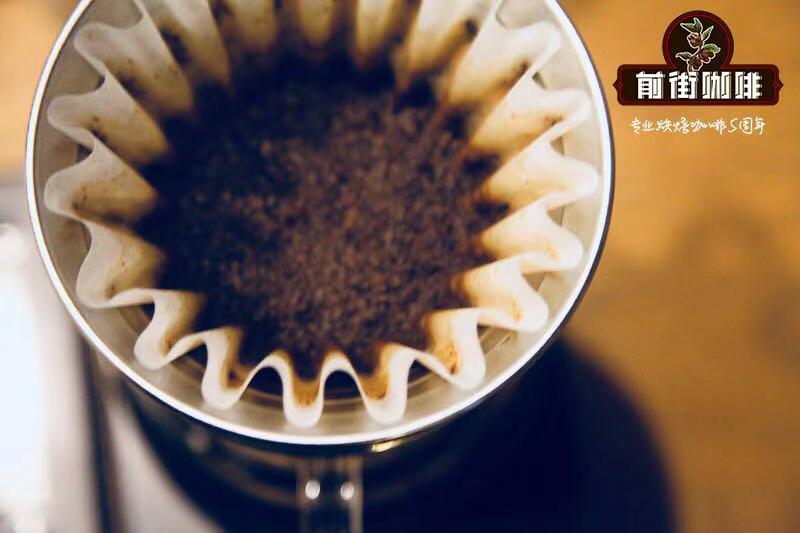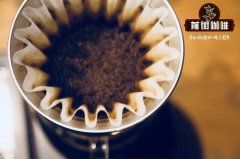How to adjust the grinding degree of the hand flush commander bean grinder? The commander's hand grinder works well.

Professional coffee knowledge exchange more coffee bean information please follow the coffee workshop (Wechat official account cafe_style)
Qianjie Coffee today talks about the grinding degree of the commander's bean grinder.
When we buy hand grinding, we will find that the hand grinding opportunity is relatively uneven, mainly because of the design of the grinding plate, the vast majority of hand grinding uses a conical grinding knife, which is characterized by fast but uneven grinding, and the relatively uniform grinding is parallel sharpening, but parallel grinding is also characterized by slow speed, that is to say, it takes 3-5 times more time to grind the same gram of powder, so hand grinding basically does not use parallel grinding.
Sunflower Liz takes the commander as an example to explain the scale of the hand mill.
Knife sharpening is the core of the commander, using a conical knife made of high-nitrogen stainless steel and adding nitrogen to stainless steel (usually iron chromium-nickel alloy), which greatly improves the hardness and corrosion resistance of stainless steel. and the refining of high-nitrogen stainless steel is also relatively difficult, this high-nitrogen grinding plate is one of the commander's magic weapons, but also one of the reasons why he can sell at this price.
The adjustment of the thickness depends on the bite of the three small balls on the three knobs and the grooves on the cone cutter. Each circle is 12 degrees, which can support about 35 degrees at most. Depending on the gear pattern on the knob and the pattern on the cone knife, you can know exactly what scale you are on. This design is much better than Porlex, and obsessive-compulsive disorder when using Porlex is often mad because he can't remember how many degrees he has turned (even when adjusting it is not very convenient to count).
The commander has now upgraded to the third generation of MK3. After reading the comparative reports written by some foreign netizens, MK3 has made some fine adjustments in the grinding plate and overall structure compared with the previous two generations, and its stability and accuracy have been further improved.
This is the official advice on the degree of grinding. I did a test of the degree of grinding myself, and a total of 12 grades were tested from 3 degrees to 36. One bean was used in each gear, and the reference material was refined salt, white granulated sugar, dime and one yuan coin.
At first glance, the naked eye of gear 3 to 9 does not seem to make much difference, but if you look closely at the small particles scattered around you, you can roughly see the thickness of the particles.
The particles above 10 steps are gradually distinct, and gradually reach the size of salt particles. It can be seen that the gap between up and down (for example, 3 and 12) is still very obvious.
To more than 20 slowly reach the thickness of sugar particles, I usually adjust the hand at about 25 degrees. With the naked eye and magnifying glass, you can see that the particles between 15 and 30 are more beautiful and uniform, of course, without a higher magnifying glass, there is no way to see a finer scale.
Now I basically use this hand mill instead of the original Flying Eagle electric mill to do hand flushing at home. I feel that there is less fine powder, and I won't screen this action again, but there is no way to make a more accurate comparison without a high-precision powder sieve and scale.
It is appropriate to flush the kono between 30 and 35 degrees, but above 30 degrees, you can clearly see that the particles are uneven, there will be some too large and some very small particles, and above 36 degrees will not be useful.
In the process of testing, except for the most difficult to grind in the tiniest gears, it is easy to grind more than 10 gears. In the thickness of the hand, the grinding time of 15g coffee beans is about 30 seconds.
Important Notice :
前街咖啡 FrontStreet Coffee has moved to new addredd:
FrontStreet Coffee Address: 315,Donghua East Road,GuangZhou
Tel:020 38364473
- Prev

What are the materials of the filter cup for the selection of entry-level coffee utensils? How to control the flow rate of the filter cup?
Professional coffee knowledge exchange more coffee bean information please follow coffee workshop (Wechat official account cafe_style) Qianjie Coffee today to talk about how to choose a hand filter cup? First of all, let's take a look at the materials of the filter cup. It can be roughly divided into plastic, ceramic, glass, and metal. Will different materials bring about differences in flavor? Indeed, I have used the same shape.
- Next

Why are mocha beans, mocha coffee and mocha pots all called mochas? What does it have to do with them?
Professional coffee knowledge exchange more coffee bean information please follow the coffee workshop (Wechat official account cafe_style) A lot of friends who have just come into contact with coffee are very confused to see the coffee noun with mocha. People who start from espresso will have a different view of mocha coffee than those who start from individual coffee. Let's learn about mocha beans, mocha coffee.
Related
- What is the Philharmonic pressure? How to use Philharmonic pressure to make delicious coffee
- Why does a hand grinder have more fine powder than an electric grinder?
- In addition to the hot mom, what is the difference between the versions of EK43 | ditting and Mahdi ek43?
- What kind of equipment do you need to make coffee by hand? Introduction to novice starter cooking equipment tools
- Espresso needs to be ground how thick and thin scale entry Italian Coffee Machine Bean Grinder investigation and Grinding course
- How much does it cost to open a small private cafe? How much does it cost to learn coffee? How to operate it?
- The difference between the flavor characteristics of hand-brewed coffee and coffee maker is hand-brewed coffee really better than coffee maker? Can I use a coffee machine to make coffee beans by hand?
- The difference between 01 and 02 of hario v60 filter cup what is the difference between 01 and 02 filter cup opening and cooking flavor
- What's the difference between the smart cup and the French kettle? Which is better, the French kettle or the Smart Cup?
- What's the difference between a smart cup and a V60 filter cup? The difference between the taste of smart cup and hand-brewed coffee

